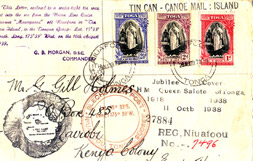 |
Found an envelope like this in your attic?
Want to know more about it?
Is it Valuable?
Our data-base can tell you the rarity of each cachet
Our data-base can tell you the rarity of each cachet
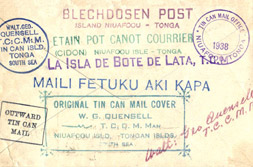 |
We can tell you how often it was used, the dates between which it was used, (this can help determine date of postage when cancellation is unreadable); the ink colours and any special features
First read further to learn how to use the data-base,
then, to research your cover, click on the button at the foot
of the page.
The Tin Can Mail Study Circuit has made an extensive study of the rubber stamps that Quensell used to put his cachets onto the mail that entered and left the island. In particular, Janet Klug gathered all the cachet data together in a catalogue.



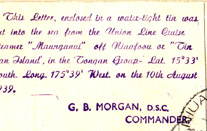
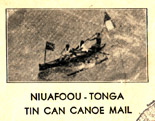


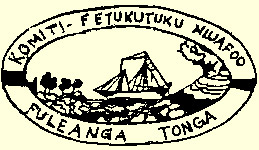
When you click on the button below you will see a collage of Tin Can Mail envelopes which contain most of the common types of cachet. As you pass your cursor over them a little fly-out label will tell you what kind of cachet you are looking at and if you click on the cachet you will be sent a page showing all the varieties of that shape of cachet.
| The rarity values are:
AA: Extremely common |
As with all collections, the monetary value depends on finding an interested buyer